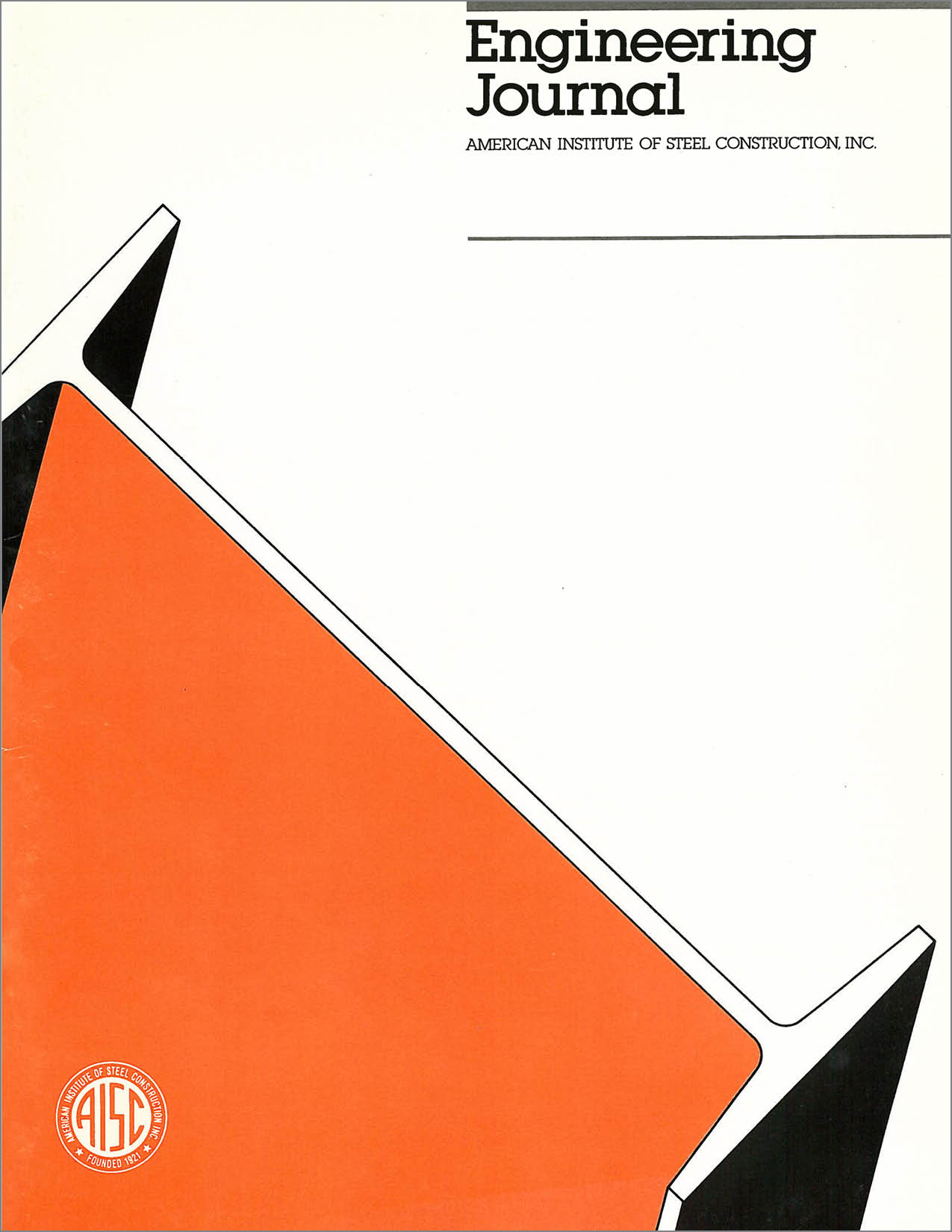Design of Diagonal Cross-Bracings: Part 2 Experimental Study
DOI:
https://doi.org/10.62913/engj.v25i4.507Abstract
The theoretical study reported in the first part of the paper (AISC Engineering Journal, 3rd Qtr., 1987, pp. 122-126) showed the transverse stiffness offered by the tension diagonal in cross-bracing systems is sufficient for assuming that, for out-of-plane buckling, the effective length of the compression diagonal is 0.5 times the diagonal length, when the diagonals are continuous and attached at the intersection point. Two series of tests were performed to demonstrate the validity of the theoretical study. Seven transverse stiffness tests were carried out to demonstrate the validity of the equations used to determine the transverse stiffness provided by the tension diagonal. Fifteen buckling tests were carried out to demonstrate the validity of the equation used to determine the effective length factor. Both series of tests are reported in this second part of the paper.

